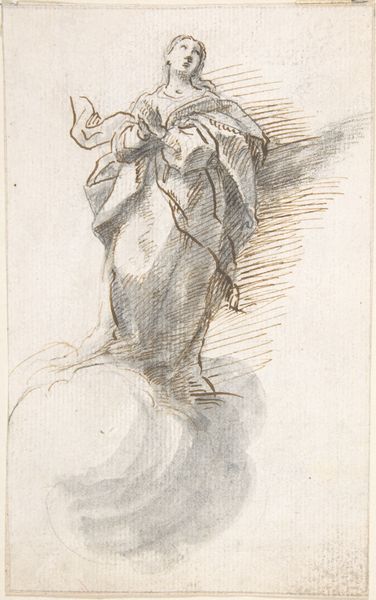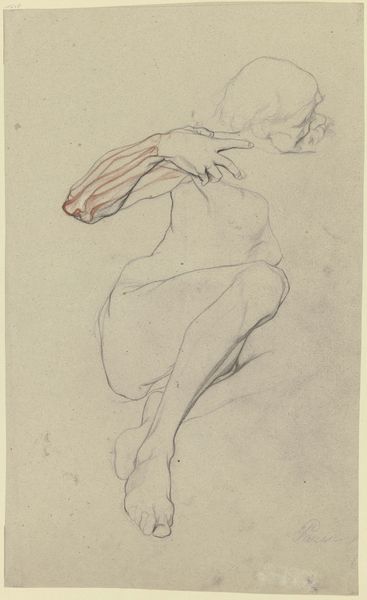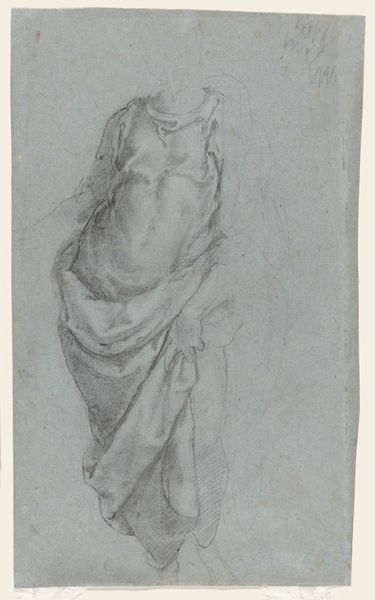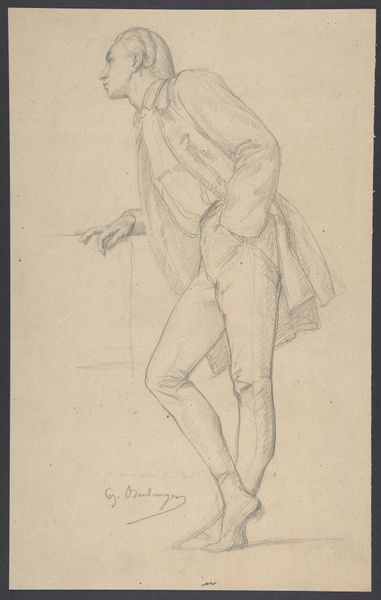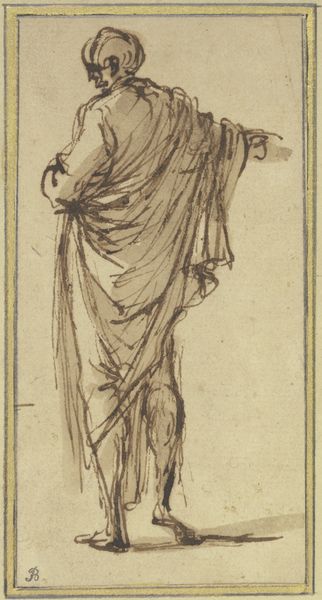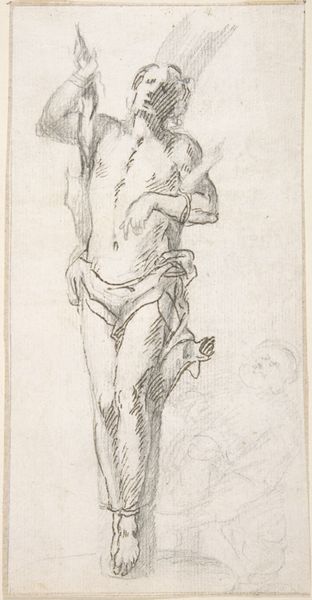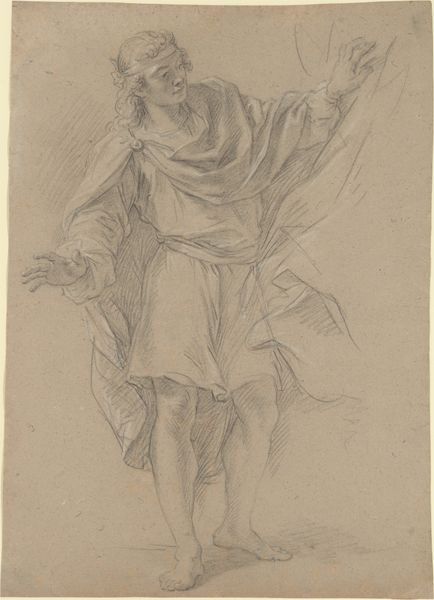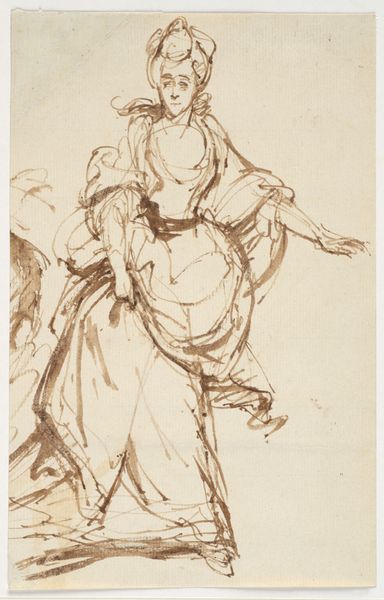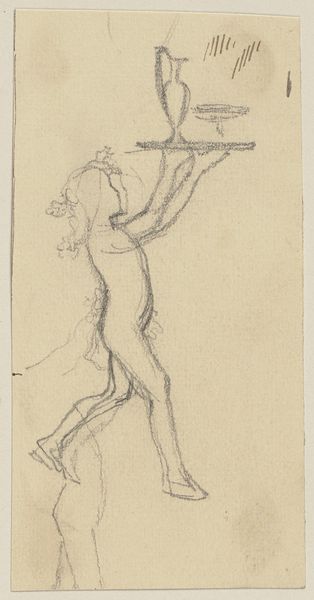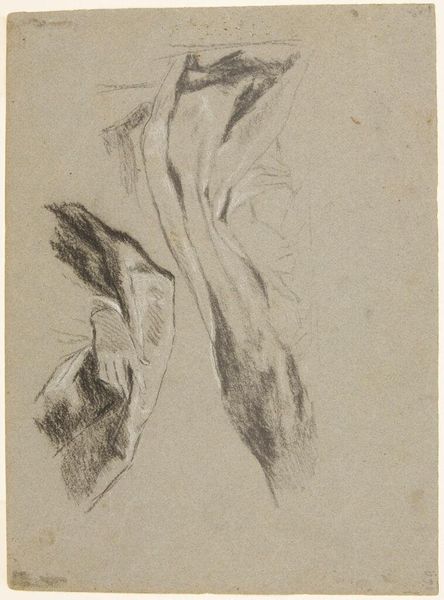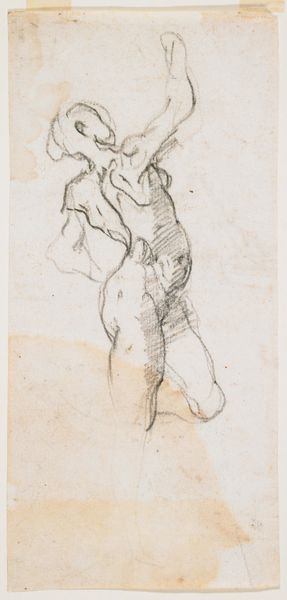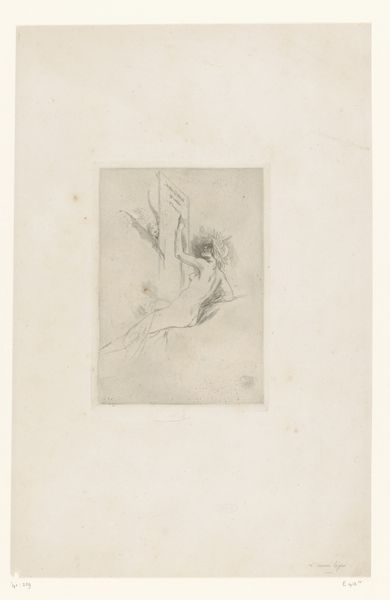
drawing, print, pencil
#
portrait
#
drawing
# print
#
figuration
#
soldier
#
pencil
#
history-painting
#
academic-art
#
realism
Dimensions: sheet: 16 1/2 x 8 in. (41.9 x 20.3 cm)
Copyright: Public Domain
Curator: Immediately I notice the somewhat faded quality—perhaps age, perhaps intention— lending a vulnerability to the subject depicted. Editor: That's astute. This is Victor-François-Eloi Biennourry's "Study of a Soldier," executed circa 1851 to 1852. The artist employed pencil to realize the composition. It resides at the Metropolitan Museum of Art, here in New York City. Curator: Yes, the visible grid marks underpinning the drawing add another dimension. They rupture the illusion and frankly render it unfinished. Almost as though Biennourry invites us into his academic process. The realism in rendering his musculature seems undeniable given how unfinished and thus real the image appears overall. Editor: This preparatory sketch is quite illustrative, and it offers invaluable insight into academic figure drawing of the mid-19th century. Notice the artist’s choice to focus primarily on anatomical correctness while experimenting with lighting. Academic figure studies prepared artists for larger, complex history paintings, thus fulfilling their civic role. Curator: Interesting. The way the light catches the drape of the garment he clutches in his hand is beautifully rendered; a stark contrast to the sketchiness throughout the rest of the work, isn’t it? It seems that the contrast itself performs some deeper purpose. Perhaps this piece asks viewers to see soldiers not as simply pawns on the chessboard of warfare, but living human beings. Editor: Your insight regarding the piece as an exercise in imbuing soldiers with personhood is compelling. It underscores art’s latent potential as a site of emotional complexity and, ultimately, cultural memory. Curator: Precisely. In this unfinishedness, viewers glimpse the potential inherent in historical portraiture— the synthesis of historical analysis and purely aesthetic appreciation. Editor: Agreed. This dialogue makes one appreciate the nuances embedded within preparatory sketches that extend far beyond technique. Curator: Indeed. I appreciate its ability to act as a bridge between formal execution and socio-cultural significance.
Comments
No comments
Be the first to comment and join the conversation on the ultimate creative platform.
